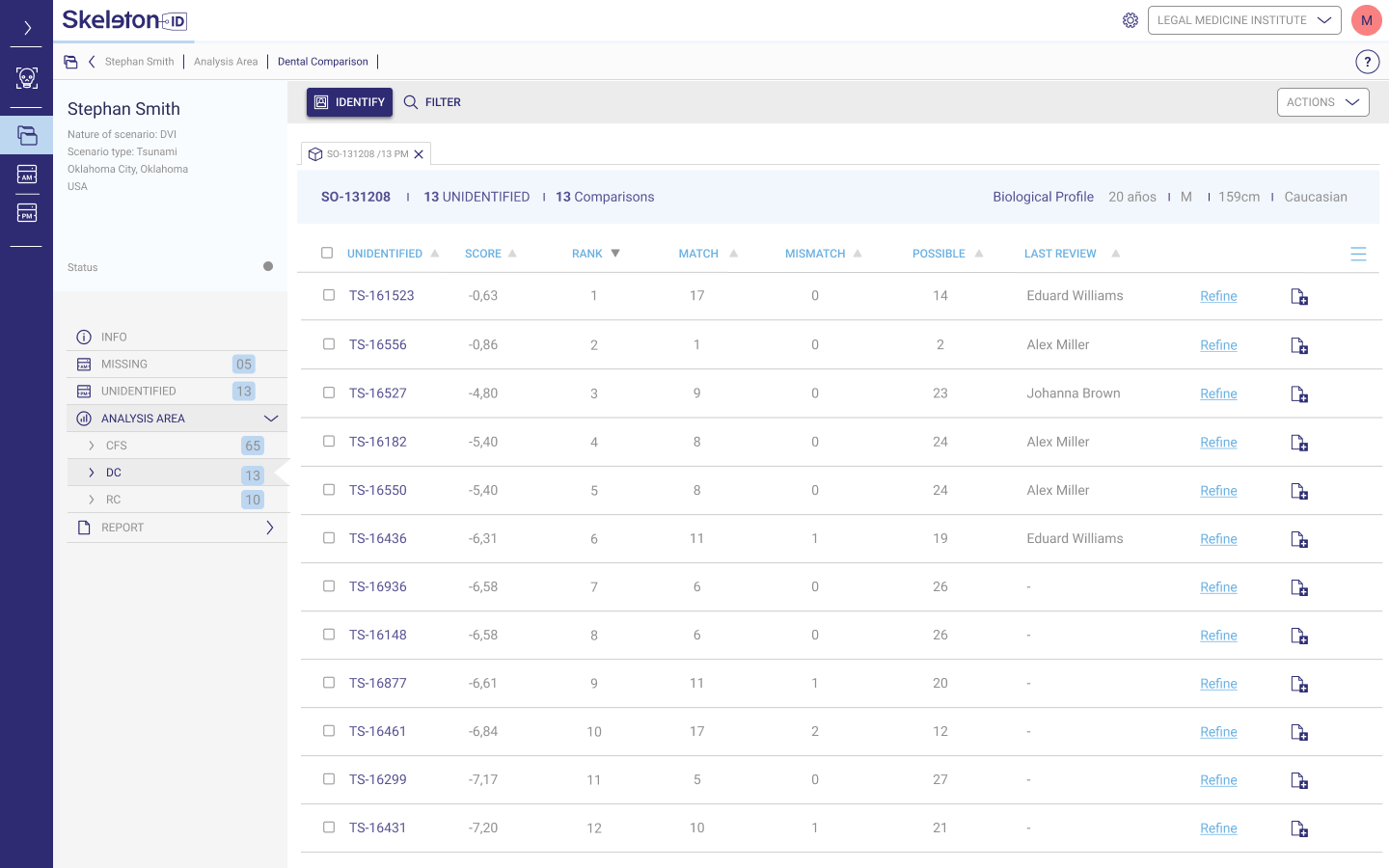Dental Comparison Module
This module of Skeleton-ID supports different methods of Dental Comparison: Odontogram Comparison and Dental Superimposition. The software can automatically compare AM and PM data, reducing work time, and is especially useful in large identification scenarios and Disaster Victim Identification.
The comparative dental analysis is internationally accepted and is considered by Interpol as a primary identification method, at the same level as fingerprints and DNA. Teeth, with their unique structure and resistant enamel, are ideal in post-mortem human identification. One complete set of adult teeth consists of 32 pieces, each of them with five surfaces and a great variety of characteristics offering up to 1.800 million combinations to obtain effective information for identification.
Dental data can be registered at the moment of the post-mortem exam and then be compared with the antemortem data provided by the dentist who treated that individual.
Dental Superimposition
Skeleton-ID allows to do an image 2D and 3D (AM-PM) superimposition automatically, facilitating the work of the expert, who will be able to make comparisons and final evaluations in a much faster and more accurate manner.
This identification method consists of the superimposition of one intraoral scanner of one individual and one 2D image where you can see the teeth.
The different tools that offer the software as changes in opacity, position, and rotation, allow the expert to evaluate the consistency or inconsistency between both images.
Odontogram Dental
Comparison
This identification method consists of the comparison of AM and PM odontograms to define coincidences and differences between them to identify the person.
The interface of the module in Skeleton-ID follows Interpol’s Standard.
It takes into account specific characteristics following a 7-code codification system. Soon we will also add the 19 and 41 codes codification systems.
It offers the expert the possibility of automatically comparing large numbers of ante-mortem and post-mortem odontogram records using an accurate classification algorithm.

Moreover, the “traffic light view” allows us to easily analyze possible consistencies and inconsistencies between both Odontograms. In this case, if the expert is not satisfied with the evaluations, they can change the colors and add comments for each dental piece.
Automatic Candidate Ranking and Report Generation
Skeleton-ID allows the automatical generation of rankings to compare large amounts of dental AM and PM data, either of Odontograms or Superimposition, just in a few seconds using FDI, Haderup, Palmer, and Universal annotations.
